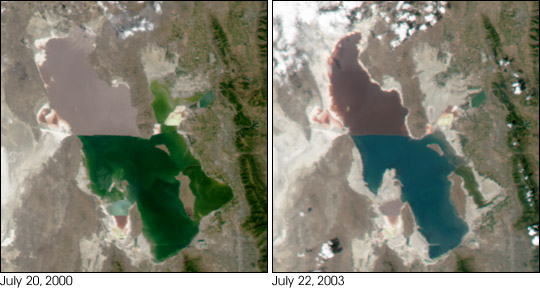

The Bonneville Salt Flats in western Utah are a remnant of Lake Bonneville. There are four different shorelines visible as ridges on Utah’s Wasatch Mountains. These changes were due to increased evaporation and a warming climate. Lake Bonneville underwent several periods of shrinking and stabilizing. The lake lost about 375 feet (114 m) of water, according to the USGS. Nearly 17,000 years ago, Lake Bonneville overflowed at Red Rock Pass in Idaho and a yearlong flood ensued. Lake Bonneville formed about 30,000 years ago from a small saline lake. Lake Bonneville was 325 miles (523 km) long and 135 miles (217 km) wide and 1,000 feet (308 m) deep.

The lake is a remnant of Lake Bonneville, an ancient, freshwater lake from the last Ice Age, said Bonnie Baxter, director of the Great Salt Lake Institute and a professor of biology at Westminster College in Salt Lake City. It features a flat expanse of salt crust called the Bonneville Salt Flats, which has ideal conditions for attempts to break land-speed records. The Great Salt Lake Desert is west of the lake. The Wasatch Range rises to the east of the lake, with several 11,000-foot mountains. Great Salt Lake lies in a region of the Western United States called the Great Basin.


 0 kommentar(er)
0 kommentar(er)
